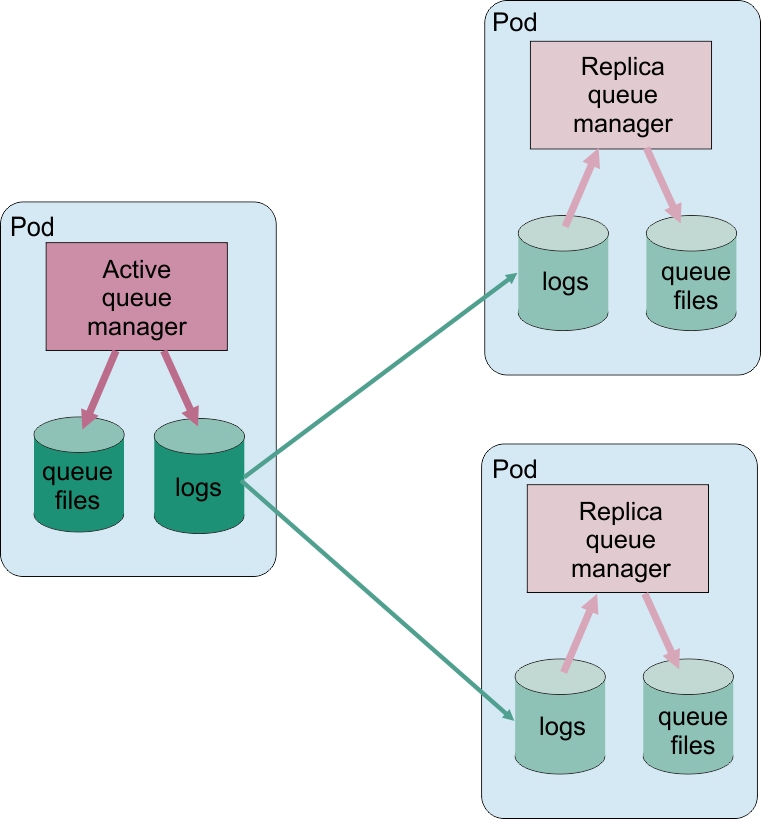![[MQ 9.2.3 Jul 2021]](ng923.gif)
![[Continuous Delivery]](ngcd.gif)
![[IBM Cloud Pak for Integration]](ngcp4i.gif)
Native HA
Native HA is a native (built-in) high availability solution for IBM® MQ that is suitable for use with cloud block storage.
A Native HA configuration provides a highly available queue manager where the recoverable MQ data (for example, the messages) are replicated across multiple sets of storage, preventing loss from storage failures. The queue manager consists of multiple running instances, one is the leader, the others are ready to quickly take over in the event of a failure, maximizing access to the queue manager and its messages.
A Native HA configuration consists of three Kubernetes pods, each with an instance of the queue manager. One instance is the active queue manager, processing messages and writing to its recovery log. Whenever the recovery log is written, the active queue manager sends the data to the other two instances, known as replicas. Each replica writes to its own recovery log, acknowledges the data, and then updates its own queue data from the replicated recovery log. If the pod running the active queue manager fails, one of the replica instances of the queue manager takes over the active role and has current data to operate with.
The log type is known as a 'replicated log'. A replicated log is essentially a linear log, with automatic log management and automatic media images enabled. See Types of logging. You use the same techniques for managing the replicated log that you use for managing a linear log.
A Kubernetes Service is used to route TCP/IP client connections to the current active instance, which is identified as being the only pod which is ready for network traffic. This happens without the need for the client application to be aware of the different instances.
Three pods are used to greatly reduce the possibility of a split-brain situation arising. In a two-pod high availability system split-brain could occur when the connectivity between the two pods breaks. With no connectivity, both pods could run the queue manager at the same time, accumulating different data. When connection is restored, there would be two different versions of the data (a 'split-brain'), and manual intervention is required to decide which data set to keep, and which to discard.
- If a single pod fails, the queue manager on one of the other two pods can take over. If two pods fail, the queue manager cannot become the active instance on the remaining pod because the pod does not have quorum (the remaining pod cannot tell whether the other two pods have failed, or they are still running and it has lost connectivity).
- If a single pod loses connectivity, the queue manager cannot become active on this pod because the pod does not have quorum. The queue manager on one of the remaining two pods can take over, which do have quorum. If all pods lose connectivity, the queue manager is unable to become active on any of the pods, because none of the pods have quorum.
If an active pod fails, and subsequently recovers, it can rejoin the group in a replica role.
The following figure shows a typical deployment with three instances of a queue manager deployed in three containers.
